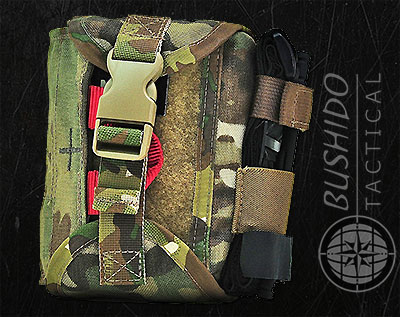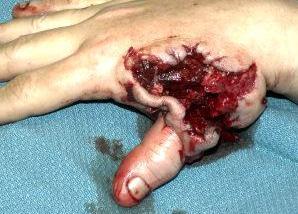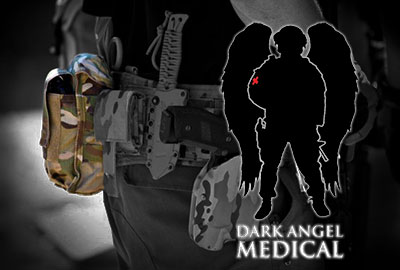
Types of Tourniquets
Tourniquets are one of the most valuable lifesaving tools you can have in your kit. Every Individual First Aid Kit (IFAK) on the market these days comes with some version of a tourniquet. If you currently have some sort of first aid kit, be sure it contains a tourniquet. As always, with ownership comes the responsibility of knowing how to use it.
Make sure you know how to use it properly. Tourniquet use is a commonly covered topic in most first-aid-type classes. There are several types of tourniquets currently on the market As with most types of equipment, they all differ and all have their pros and cons. It will be up to you to decide which one is appropriate for you and take the necessary steps to complete the proper training. I will be covering several types of modern tourniquets in this article.
I do not want there to be any surprises about the cost of these tourniquets. When taken into the context of the big picture, the price of a lifesaving tourniquet is quite small.
We hunters and outdoorsmen are a strange group sometimes. We will dump hundreds, if not thousands, of dollars into the newest rifle, camo, optics, or ammo, without thinking twice; but yet we are hesitant when we notice the price of something that may save our lives. Most modern tourniquets range in price from a few cents to over $50. Tourniquets are prime examples of — you get what you pay for.
 Another quick fun fact, there are many, many fake or knock off tourniquets. If you see a brand name tourniquet with a price too good to be true, it’s probably a knock off. These are generally used by military re-enactors or on movie production sets. Unfortunately, some of these have made it to the open market.
Another quick fun fact, there are many, many fake or knock off tourniquets. If you see a brand name tourniquet with a price too good to be true, it’s probably a knock off. These are generally used by military re-enactors or on movie production sets. Unfortunately, some of these have made it to the open market.
Be very cautious when buying from smaller, less known shops or stores. The worst-case scenario is that you won’t know they are fake until you go to use it, and it does not work. This goes back to my previous point. Take it out of the package, know how to use it, and make sure it works!
Before we dive head first into the world of tourniquets, let’s review what their purpose is and how we use them. Tourniquets were first used back in the days of the Romans. Soldiers discovered they could stop bleeding for battlefield injuries as well as surgical purposes.
As a result, every major war from then on, including our current operations in Iraq and Afghanistan, has seen improvements in tourniquet use and design. In military studies, over 60% of preventable fatalities were caused by exsanguinations or bleeding1. Tourniquets make that difference.
It all boils down to this question: What is the best way to restrict or stop blood flow? The correct answer is by any means possible.
Modern tourniquets have improved so greatly that it is hard to choose the best. Since there is are a variety of tourniquets, we will be bypassing the tourniquets used by EMS personnel to help start IVs or pneumatic tourniquets used by surgeons. Most of those are insufficient for truly stopping deep arterial blood flow. We will be talking strictly about those used on the modern battlefield and made specifically for stopping arterial blood flow.
Windlass
Tourniquets that create leverage by twisting to control bleeding use a metal rod or piece of plastic, which is called a windlass. This windlass creates an incredible amount of force to tighten the one- to two-inch strap around the extremity. All modern windlass tourniquets have a way to secure the rod once adequate leverage to stop the bleeding has been achieved. Some tourniquets use rigid plastic curved ends to keep the windlass from coming undone; others are able to lock in place using Velcro. Here are the two most common brands of windlass tourniquets.
 The Combat Application Tourniquet, commonly called CAT, is currently fielded by over a million service members around the world. These have been popular since they became standard issue for GIs in the early 2000s. Since then, they have saved thousands of lives.
The Combat Application Tourniquet, commonly called CAT, is currently fielded by over a million service members around the world. These have been popular since they became standard issue for GIs in the early 2000s. Since then, they have saved thousands of lives.
Its simple to use design allows for one-handed deployment and application. Just because it is simple to use, you still have to be familiar with it for it to be used properly. The windlass is secured at one end and then covered with Velcro to keep it from loosening.
There are excellent resources online which should be viewed to understand how to properly apply the CAT. They can be easily found and purchased on the Internet. CAT prices range from $20 to $30. I personally like these and have them in my kit.
The SOF TT (tactical tourniquet) is widely popular with military units and specialized police forces. It also utilizes a windlass system. It differs slightly in that both ends of the metal windlass can be secured so that it will not release while the person is being moved or while they are still involved in a firefight. These tourniquets are great, easy to use, and very effective.
The SOF TT is the standard size and is adequate in most cases; however, they offer the SOF TTW (Wide), which is better suited for larger limbs. Due to the new materials, the “W” version is 25% lighter than the standard version, but the windlass can only be secured on one side. These are also readily available online. The price for SOF TT range from $25 to $35. I also carry these in my kit.
Mechanical Advantage Tourniquets MAT
MATs came on the market from Pyng Medical around 2006. Instead of a windlass to apply leverage and force, it uses a ratchet-like device at the top. Its high-gear ratio creates enough pressure to control bleeding. Using Department of Defense guidelines, MATs were specifically designed for military use. They are also now used in some fire and EMS departments.
A problem that has been expressed is the difficulty to store the MAT in your combat kit due to its rigid top and sides. Some MATS have broken while not in use from being banged around. Also worth noting, the gears in the rachet system are plastic, and the teeth of the gears can become weakened and stripped easily.
Pyng has made improvements on their systems, even winning some prestigious awards. I would encourage you to try one of these to see if they are right for you. I have honestly only used these while in training and found them to be effective; however, MATs are not in my personal kit. MATs can be purchased online for around $35.
Other tourniquets
 There is another group of tourniquets we can talk about. I call them the “in betweens.” These can act as both tourniquets and pressure bandages. They are made from an elastic, latex-free material, which I would compare to an inner tube.
There is another group of tourniquets we can talk about. I call them the “in betweens.” These can act as both tourniquets and pressure bandages. They are made from an elastic, latex-free material, which I would compare to an inner tube.
These “in between” tourniquets are very, very effective at stopping bleeding by applying direct pressure or when used as a tourniquet. As a pressure bandage, you would apply your normal or hemostatic bandage to the wound, then tightly wrap it around the bandage. When used as a tourniquet, it’s placed high on the extremity, and stretched while wrapping it several times around the injured limb. Caution should be used with this type of tourniquet because while being extremely effective, it’s almost too effective.
What does that mean? How can a tourniquet be too effective? The SWAT T is a perfect example of how it can be too effective. Using the SWAT T, like all equipment, takes a knowledge base to use because if used improperly, it can actually cause damage by creating hundreds of pounds of pressure per square inch.
While stretching and wrapping at the same time, the pressure compounds exponentially, equalling an extreme amount of force. It’s possible to damage tissue that is otherwise uninjured. It is imperative that you understand these forces and adjust your treatment accordingly. I find these to be advantageous to your tool kit, as it can serve several functions. SWAT Ts can be purchased from many different online companies for around $10.
There is a new product in the tourniquet world. Blackhawk Warrior Wear makes combat shirts and pants with integrated tourniquets built into the clothing. They are located in the upper arms of the shirts and upper thigh area of the pants. They can be a great addition to your gear. I would only suggest these if you are truly in the line of fire on a regular basis. They can be expensive.
Knowing how to use these tools correctly and training with them on a regular basis could mean the difference between life or death. Also, be aware that tourniquets are not the end of treatment. If you have to use a tourniquet, definitive care is necessary, and the only way to stop bleeding is by surgery. I am going to preach over and over again to purchase an IFAK and train with it as much as possible. If for whatever reason you absolutely cannot purchase an IFAK, at the very least, PLEASE, I beg you to buy an effective tourniquet. Take it with you on every hunt or outing, and place one on your hip or somewhere on your kit that is easily accessible. You owe it to yourself and your family.
Prepared or unprepared? Trained or Untrained? Which one are you?
S.H.W.A.T Medic
References:
1. Tien, H. C., Jung, V. An evaluation of tactical combat casualty care interventions in a combat environment. Journal of Special Operations Medicine. Winter, 2009, Vol. 9, 1.
CAT: http://combattourniquet.com/resources/videos/one-handed-application/
http://combattourniquet.com/resources/videos/two-handed-application/
SOF TT: www.tacticalmedsolutions.com/videos
M.A.T: www.pyng.com,http://www.boundtree.com/
SWAT T: http://www.swattourniquet.com/product.html
Warrior Wear: www.blackhawk.com
Bushido Tactical: www.bushidotactical.com
Dark Angel Medical: www.darkangelmedical.com

